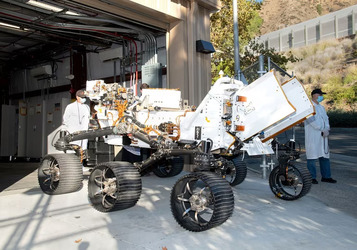The week's pick
Random Articles
Reseach Article
E-Governance for Good Governance: Experiences from Public Service Delivery
| Communications on Applied Electronics |
| Foundation of Computer Science (FCS), NY, USA |
| Volume 7 - Number 3 |
| Year of Publication: 2017 |
| Authors: Mohammad Abdul Salam |
 10.5120/cae2017652619
10.5120/cae2017652619
|
Mohammad Abdul Salam . E-Governance for Good Governance: Experiences from Public Service Delivery. Communications on Applied Electronics. 7, 3 ( Jun 2017), 26-29. DOI=10.5120/cae2017652619
Abstract
E-governance is widely accepted as an effective tool of service delivery and equated with good governance by all developed countries in general and developing countries like Bangladesh in particular. The core purpose of this study is to validate the e-governance for good governance. The quantitative research approach was conducted. Data was collected using self-administered questionnaire from random samples drawn from the population of service providers and service receivers from four different DESCs of Bangladesh. The standard of service, choice & consultation, courtesy & consultation, entrance & information, and value for money variables were used to assess the quality of service while accountability, transparency, effectiveness, responsiveness, and rule of law were used to analysis the effective measures for good governance. The study results revealed that the DESC provides public services efficiently and e-governance is positively correlated to good governance promises impending to validation of hypothesis.
References
- Saeed, M. (2012). E-governance service delivery-an assessment of community information center model in India. Interdisciplinary Journal of Contemporary Research in Business, 3(9): 1344- 1359.
- Heeks, R. (2001). Understanding e-governance for development, i-government working paper series. Institute for Development Policy and Management, University of Manchester, No 11.
- Ghosh, S., Surjadjaja, H., and Antony, J. (2004). Optimization of the determinants of eservice operation. Business Process Management Journal, 10(6): 616-636.
- Li, H. and Suomi, R. (2007). Evaluating electronic service quality: a transaction process based evaluation model. In Remenyi, Dan (editor) Proceedings of ECIME 2007. The European Conference on Information Management and Evaluation. Montpellier, France 2021. September 2007, pp.331-340.
- UNDP. (2007). Pro-Poor Public Ser-vice Delivery with ICTs (E-Note 11), “Making local e- governance work towards achieving the millennium development goals.
- Kasubiene, L. and Vanagas, P. (2007). Assumptions of e-government services quality evaluations. Engineering Economics, 5(55): 68-74.
- Creswell, J. W. (2003). Research design: qualitative, quantitative and mixed methods approach (2nd ed), Thousand Oaks, Calif.: Sage.
- United Nations Development Programme (UNDP). (2003). The urban governance initiatives (TUGI). Environment & Urbanization, 15(1): 159-169.
- Pitman, A. (2006). Achieving better government outcomes efficiently and effectively via e- government, Microsoft Corporation.
- Pallent, J. (2007). SPSS Survival Manual: A Step by Step Guide to Data Analysis using SPSS for Windows, England, McGraw.
- Field, J.M., Heim, G.R. and Sinha, K.K. (2004). Managing quality in the eservice system: Development and application of a process model. Production and Operations Management, 13(4): 291-306.
Index Terms
Keywords

